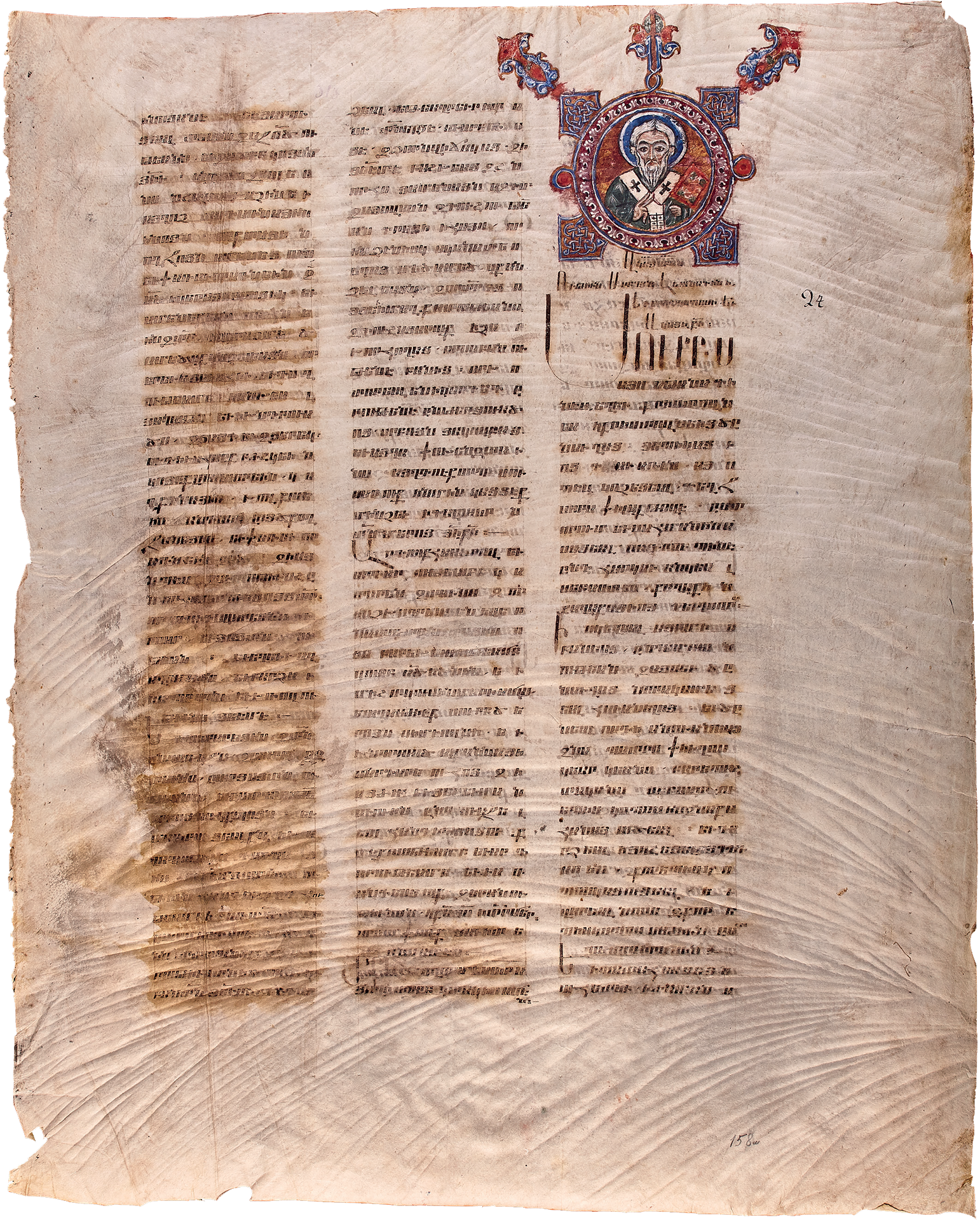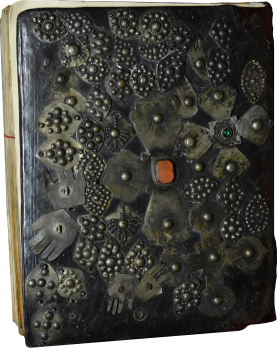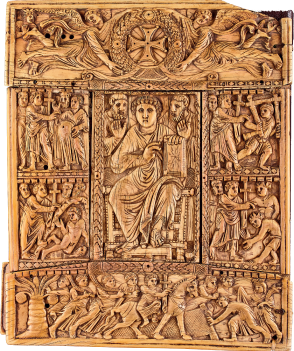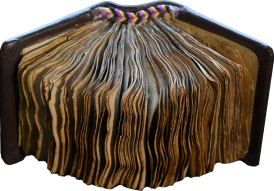Treasures of the treasury
Grigor Narekatsi or Gregory of Narek, Book of Lamentations, copied in 1173

Armenian literature is one of the oldest in the world, reaching its peak in the 10th-12th centuries. Grigor Narekatsi, the founder of the renaissance of Armenian literature and a great philosopher, lived and worked in this period. One of the masterpieces of Narekatsi’s literary legacy and of Armenian medieval literature in general is the collection of prayers in verse titled The Book of Lamentations, which rightfully belongs to the group of exceptional artistic values created by mankind. It was written in 1001-1003 and is still very popular. The work is also known as Narek. It is believed to have healing properties. As early as the 12th century, Narekatsi was ranked among the saints, and in 2015, Pope Francis declared St. Grigor Narekatsi a Doctor of the Universal Church.
Homilies of Mush

The Homilies of Mush is the largest Armenian manuscript, copied and illustrated in 1200-1202 on parchment in the Avag Village of Yerzinka. It contains speeches, sermons, odes, epistles, rules and other materials. To write this giant manuscript, sheets of parchment of appropriate sizes were processed, one calf skin was used for each page (70.5 cm x 55.5 cm). According to the colophon, in 1203, during the Muslim invasions, the owner of the manuscript, Astvatsatur, was killed and his property was confiscated. A Turkish official from the city of Khlat obtained the manuscript by deception. The monks of the Surb Arakelots (Holy Apostles) Monastery of Mush with Bishop Yesai in the lead, with the help of the donations of the inhabitants of Mush and surrounding villages and after a year of negotiations bought and returned the manuscript with 4000 silver fee.
Shurishkan Gospel

The Shurishkan Gospel, having the reputation of a miraculous and wish fulfilling gospel, was written in 1498 in the village of Aspisnak of the Kajberunik province. In 1604, during the deportation of Armenians organized by Shah Abbas, the Gospel was brought to Iran by its owners. Later, the city of New Julfa and nearby villages were founded there. The manuscript was kept in the village of Shurishkan in the province of Peria. The Gospel received one of its names from the place where it was kept. It was also called “Grandfather”, “Red Gospel”, “St. Barsegh of Caesarea”.
Vehamor Gospel

The Vehamor Gospel is the oldest preserved complete Armenian manuscript. It dates back to the 7th century. This manuscript was donated to the Matenadaran by Catholicos Vazken I who dedicated it to the memory of his mother, Siranuysh Baljian, and that is why the manuscript is called “Vehamor Gospel”.
The Ivory Binding, Etchmiadzin Gospel, and the 6-7th century miniatures

The bindings of the Armenian manuscripts, which are usually made of wood and covered with leather, often also decorated with silver and semi-precious stones, are of special value. Among the ancient bindings, the 6th-century magnificent ivory binding of the Etchmiadzin Gospel is especially remarkable. As a binding, it was attached to the Etchmiadzin Gospel of 989 in Bgheno-Noravank (Syunik).
Small Church Calendar

The smallest manuscript on parchment in the world is one of the rare specimens of the Matenadaran. It is a church calendar copied in 1436 in Crimea on the treated skin of a newborn calf. The manuscript weighs exactly 19 g and consists of 104 pages. It was written and read with a magnifying glass.
